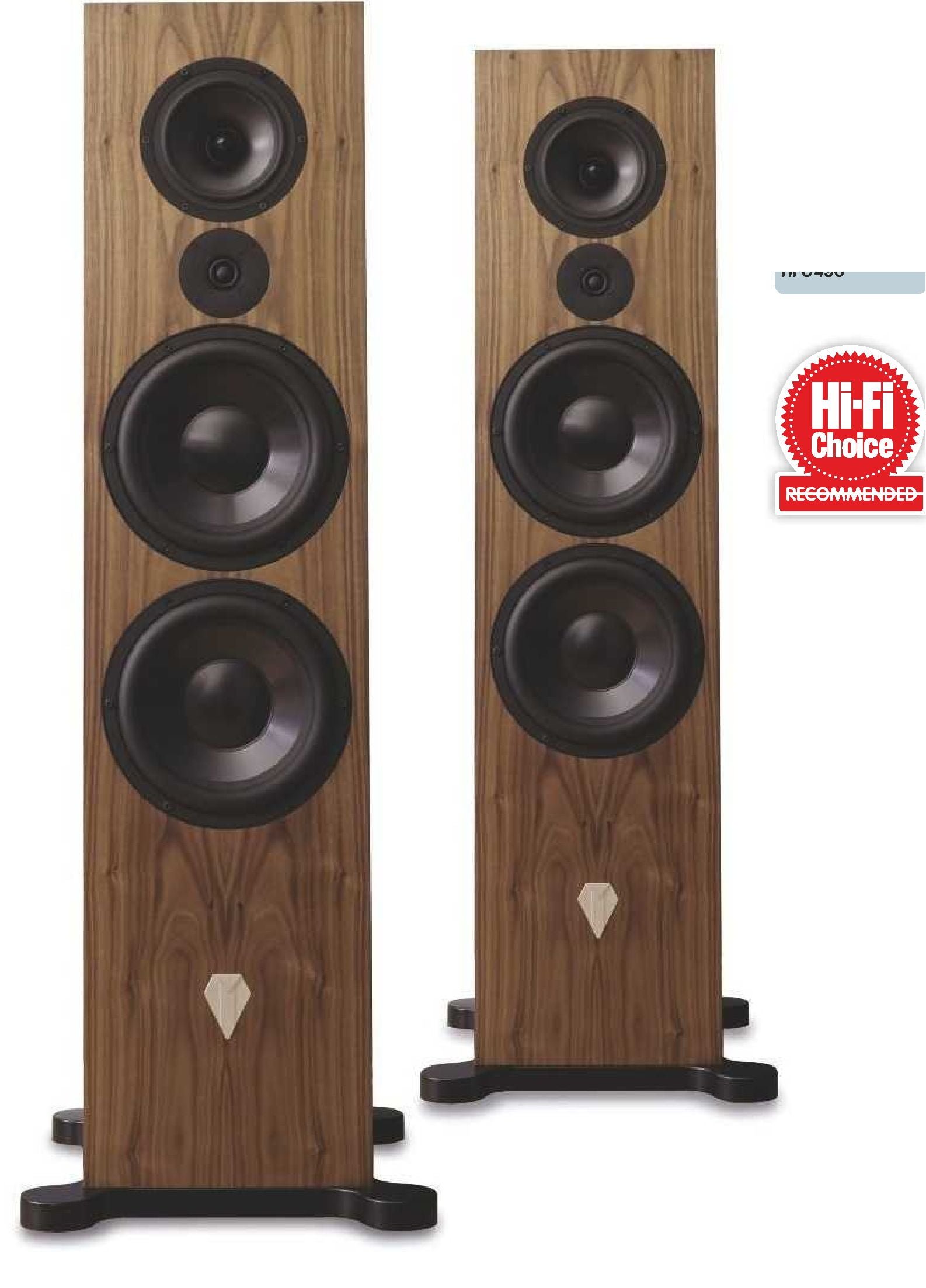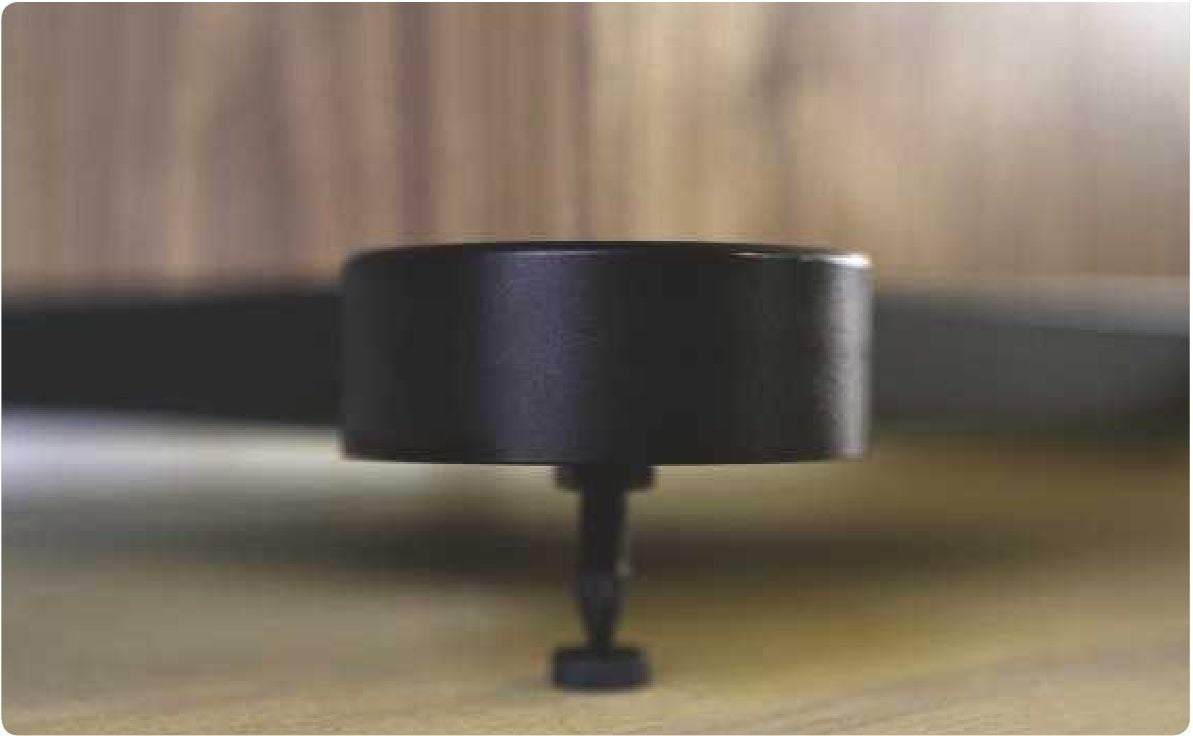Ophidian Voodoo Review
There are small loudspeakers, tall speakers and speakers like the Voodoo which just make you stop and stare… Read our Ophidian Voodoo Review.

DETAILS
| PRODUCT | Ophidian Voodoo |
| ORIGIN | UK |
| TYPE | 3-way floorstanding loudspeaker |
| WEIGHT | 59.5kg |
| DIMENSIONS (WxHxD) | 304 x 1,300 x 365mm |
| FEATURES | • 22mm fabric dome tweeter • 80mm aluminium cone mid/bass driver •2x265mm aluminium cone bass drivers • Quoted sensitivity: 87dB/1W/1m (4ohm) |
| DISTRIBUTOR | Ophidian Audio Ltd. |
| WEBSITE | ophidian.co.uk |
Does size really matter? Experiencing Voodoo might well provide the answer. No, I don’t mean Hendrix, Winwood, Mason and Cassidy giving Voodoo Chile the full business. Which isn’t to say Jimi won’t get his turn later because, for our purposes, Voodoo is what you see here – specialist British speaker maker Ophidian’s XXL statement on the art of go-for-broke, flagship floorstander.
Believe me, pictures give very little idea of how big and heavy it is. Let’s wheel in B&W’s 702 Signature (HFC 480) for comparison. It’s 994mm tall and weighs a beefy 29.5kg. Certainly large enough to get noticed. Not weedy by any stretch. Yet you could hide a 702 in the shadow cast by the Voodoo. It would be like Tyson Fury putting a protective arm around Tom Cruise. The Voodoo is 1,300mm high, 304mm wide and weighs nearly 60kg. It needs as much house room as a floorstanding Wilson Audio or Magico. It’s taller than my mum.
Ophidian’s founder, designer and boss, Gareth James, delivers the Voodoo to me personally which, to say the least, is a welcome pair of helping hands for getting it setup.
Voodoo’s dynamic headroom and midband openness are unprecedented
Voodoo sure is a big statement for Ophidian, a company I described as a tiny, vision-led, auteur-style loudspeaker maker when I reviewed its previous flagship, the £k P3 Evolution (HFC 451). That was back in 2020 – and it’s a testament to James’ skill, and not least the effectiveness of his proprietary Aeroflex bass loading system – that, until its retirement, the P3 Evolution appeared in HFC’s Buying Guide every month. I would say big shoes to fill but, well, you’ve got the idea by now.
Ophidian’s lineup of models may have evolved, but its founding MO has not. Obviously, there’s the ambition to give the big brands a run for their money, but not by trying to emulate them and design and manufacture everything in-house – a functional impossibility. Instead, the approach is to combine fine, bought-in ingredients and apply fresh thinking to some old, established ideas.
It’s a very large three-way floorstander employing two 265mm bass drivers, a 180mm mid/bass unit and a 22mm soft dome tweeter. It’s no surprise that the bass drivers’ black anodised aluminium cones have powerful motor systems with large magnet assemblies, but James notes that the design features three shorting rings to help reduce distortion to very low levels. This despite the bass drivers having a claimed linear excursion of over 25mm, which – in league with the Aeroflex loading – is said to fill even the largest listening room with active subwoofer-rivalling bass power and extension.
Aeroflex is Ophidian’s USP. Essentially a hybrid of transmission line and conventional reflex porting, its job is to keep the drivers fully loaded until they hit their natural useful excursion limits. James says that most reflex systems ‘unload’ the drivers once the port velocities reach a certain point, precipitating a lack of cone control and the onset of port ‘chuffing’. He contends that Aeroflex is a way of getting around this without going to a full transmission line, which he says has its own drawbacks. The system is built directly into the cabinet with additional panels that act as both the port system (which vents at the bottom of the rear baffle) and bracing to bolster the enclosure’s rigidity. A modest amount of soft damping material is used to absorb internal resonances and reflections, but not so much as to impede the critical airflow that allows the port system to function properly.
The mid/bass driver matches its fellow drive units with a powerful magnet system, while the use of aluminium extends to the solid phase plug as well as the cone. And, mirroring the design of the bass drivers, there are multiple shorting paths to minimise distortion. Key to the midband performance, however, is the separate, damped sub-enclosure that isolates the driver from the external walls of the cabinet and potential colouration.
As with the discontinued P3 Evolution, the 22mm fabric dome tweeter, which sits below the mid/ bass driver, is from Sonomex and the crossover components are made by Mundorf. The tweeter has a large roll surround, allowing a lower than usual crossover point, but still has excellent off-axis dispersion for a wide ‘sweet spot’ according to James. No variation on the large magnet theme for the smallest driver. From top to bottom, high-power handling and accurate transient response are baked into the Voodoo’s design. Classy WBT binding posts made from high purity copper conductors plated with 24-carat gold finish things off.
HOW IT COMPARES
Anyone willing to spend £k on a pair of speakers probably won’t baulk at splashing a little more for an even weightier behemoth because shutting out B&W’s magnificent, £k 801 D4 (HFC 482) would be a shame. Like the Voodoo, it will go scarily loud but, just as impressive, the soundscape is huge and the low end from its big dual Aerofoil bass drivers both incredibly powerful and remarkably controlled. Like the towering Ophidian, the rotund 801 D4 draws you right into the music and just won’t let go.

Sound quality
That we think so much about soundstage, imaging, scale, authority and the rest is, weirdly, a hunt for failure. Our attention is snagged by limitations we can identify and articulate. Wide but not especially deep. Lacks a little… height, focus, air, layering, solidity, whatever.
Even if intended positively, all are descriptors that modify the reality we take for granted. Good equals not quite right. That’s why the hi-fi journey is such a pleasurable struggle. It’s the process of improvement via iterative, incremental matters of degree that feeds our obsession.
Then along comes a speaker like the Voodoo and, once hooked up to a suitably muscular amplifier – in this case a Chord TToby (HFC 423) taking its lead from a Chord Hugo TT2 DAC/ pre (HFC 468) – getting tangled up in matters of presentational minutiae suddenly seems laughably irrelevant. When Hendrix and co finally hit their stride in the second half of Voodoo Chile, you’re not hearing a delineated soundscape from a distance with a critical ear, but living a visceral musical experience defined by a relatable scale, the effortless force and finesse of unfettered dynamics, supple, weighty bass that breathes, stereo without obvious boundaries. It’s a perceptual reset that once heard is hard to forget. The change of gear between the sauntering, late-night looseness of Voodoo Chile’s opening five minutes and the gathering wrecking ball energy of Hendrix’s solos towards the end is stunning.
The previous Ophidian P3 Evolution hinted strongly at loosening the hi-fi straitjacket, but Voodoo snaps the straps and ushers us into a larger world. Reprising Esperanza Spalding’s 12 Little Spells from the P3 review, the talent for tonal texture and warmth is just as evident, but the sheer amount of dynamic headroom and midband openness are unprecedented so that, once again, it doesn’t just cease to be a topic for conversation, it never even occurs to me.
Leaning on the TToby’s fast, clean and grippy 100W a side, the 87dB sensitive Voodoo drives my larger listening room to feeling guilty levels with such ease and giggle-inducing bass extension, I can’t help wondering what it might be capable of on the other end of the something with half kilowatt pop. Maybe for another day.
Conclusion
What Ophidian’s Voodoo demonstrates so potently is that it’s not all about loudness, dynamic clout and bass. It’s hard to overestimate the value of sound you feel you can walk into with a sense of true scale and space, and it delivers this beautifully. Unlike some large-panel designs, the wide-open presentation has fulsome body and the kind of bandwidth you can feel. This calibre of believability is true high-end and, as such, the £k asking price suddenly seems very reasonable value as a result. DV
OUR VERDICT
The Ophidian Voodoo Speaker Unveiling at North West Audio Show 2022 -Real Audio Sample
I was there! Now you can be too! In stunning binaural sound, HEADPHONES ONLY- I capture the Ophidian Room in full swing.






